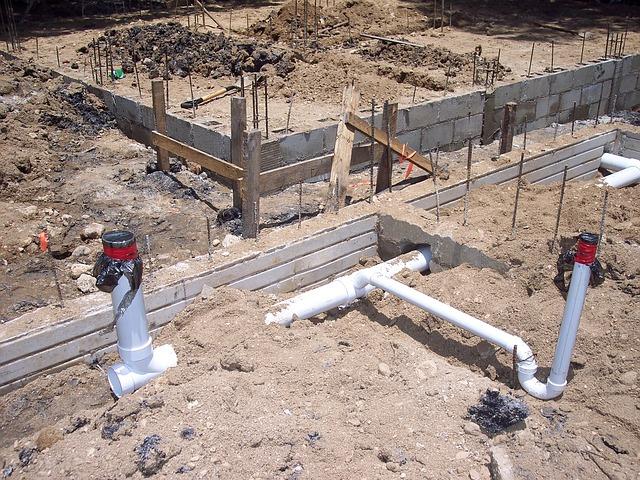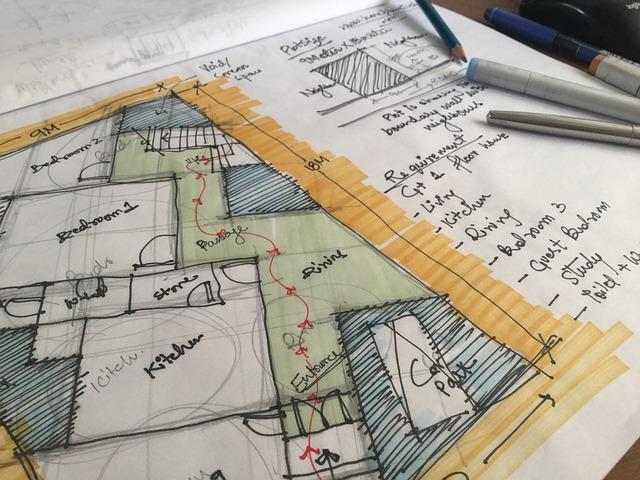
Building construction is exciting. As a homeowner or prospective homeowner, knowing the different stages will give you a good picture of the building construction process from start to finish.
This article discusses the various steps and stages of building construction.
Understanding these stages helps you to prepare ahead. Although buildings have different project demands, there are fundamental stages of any building project.
Stages of a Building Construction Project
1. The Clearing Stage

This is the premier stage, and it has its step by step procedure. At this stage, you buy the land, do necessary registrations to sustain ownership, design, and plan your budget.
- Choose land
Select land according to your preferences and choose a location that suits your taste. Consider the soil type, climate conditions, and building rules attached to the site you have chosen. Make sure that there are no objections to building a house in that specific location.
Go with your architect for more clarity. This will make it easier to verify the necessary information and ensure that there are no legal restrictions and complications. Don't skimp over cheap land.
- Design
You don't need an architect yet. Make a rough representation of how you want your building to look. What concept do you want the full structure to follow? And what building materials to use? Involve friends and family. Talk to those who have constructed a building before to know mistakes to avoid.
- Budgeting and planning
Spell out how much you need for the construction and ensure you have your proposed budget available. You may seek loans if necessary. But when you have the amount needed already, building construction will be faster.
- Architectural drawings

Invite your architect, and together you can come up with a virtual representation of the proposed building structure. Your architect will draw the layouts room-by-room and position the furniture and walls. Make corrections where necessary and take your architect’s advice seriously.
- Building consent
Get your building design approved by appropriate bodies. Some areas have specific requirements for building designs and layouts while some don't. Make sure your building structure and materials are permitted at the location before you move to the next stage.
2. The Foundation

Foundation is the base of all building construction. It is a very crucial stage that determines if the building will be a success or not. Choosing a good builder is the first step to succeeding in this stage, then constructing the foundation that suits your building demands.
- Building contractor
A contractor will make selecting the right personnel for each building task easier. It is also cheaper to work with a contractor. You won't need to get a builder, plumber, or electrician.
A good contractor will supervise the whole process. Choose a contractor that is experienced, reliable, and detail-oriented. This way, you will most certainly get a suitable builder for your foundation.
- Groundbreaking and excavation
After the site has been cleared and prepared for construction, groundbreaking commences by the layout of the building and the type of foundation to be constructed.
- Foundation
This is the lowest portion of a building. It bears the building weight and must be constructed properly. The various types of foundations depend on the building weight, which can be determined by the architectural drawing and soil type.
After filling up the footings with concrete, you will have to give it some time to cure. During this curing period, there will be no construction on the site. All plumbing needed on the first floor is installed and the hole around the foundation is filled up after the concrete has cured.
3. The Framing Stage

The installation of internal and external structures begins in this stage. Walls, electrical, plumbing, roofing, gutters, and insulation are all framed up. At this stage, intense building materials are needed.
- Build boundary walls
Since more materials will be moved into the site storage, you have to protect the site. Boundary walls and gates are needed to provide security for your building materials.
- Rough framing
This is the completion of the floor systems, roofs, and wall systems. They are called the shell of the building. Plumbing and electrical wares are also installed. Pipes and wires, sewer lines and vents, water supply lines, bathtubs and shower units, ductwork for the HIVAC system, and HIVAC vent pipes are all installed.
Bathtubs are installed at this stage because there is more space to move large objects around. It is easier to run wires around pipes, so the HIVAC ducts and other plumbing are done before wiring.
When this is completed and the roof is fully installed, the electrician comes to install sockets, outlets, lights, and switches. Wiring at this stage also includes the TV and audio system.
- Insulation
The type of insulation to install depends on the region and climate. Fiberglass, cellulose, foam mineral wood, concrete blocks, spray foam, and structural insulated panels are common types of insulation for homes.
Insulation, in general, provides a comfortable and consistent indoor climate, which improves home energy efficiency. Make sure they are well installed for effectiveness.
4. Interior and Exterior Lock-Up
This stage is when the interior and exterior fixtures are installed. The building doors and windows are fixed, walkways and driveways are installed, and hard-surface floorings are also not left out at this stage.
- Drywall and texturing
Drywall takes seams between boards out of sight. It should be hung and taped. Then, a primary coating is done and contractors begin exterior finishes such as installing brick, concrete, stone, and siding.
- Driveways and walkways
Interior doors, stairs, windows sills, door casing, and decorative trims are all installed. Suitable interior designs or plans are to be initiated at this stage to beautify the building. Walls should be given their final coatings or wallpapered, depending on your choice. Cabinets and shelves will also be installed.

Some builders prefer to wait till the end before forming the exterior driveways and walkways, but generally, they are formed at this stage.
Exterior driveways might need some time to dry. Some builders pour out the concrete for the driveway as soon as they finish foundations. It is easier that way so that finishing up will be faster when they get to this stage. Other builders don't pour out the driveways until the end of constructions so that heavy equipment won't break the concrete.
- Flooring and countertops

There are several types of flooring to fit rooms and personal taste. Whether you choose ceramic tiles, vinyl, or wood flooring, finish grading is necessary at the exterior to ensure proper drainage. The same applies to countertops.
- Mechanical trims and bathroom fixtures
Electrical panels are installed with light fixtures, outlets, and switches adequately installed. Sinks, shower doors, mirrors, toilet seats, and faucets are not left out.
- Landscaping
Beautiful trees, grasses, and shrubs are planted to complete exterior landscaping. If you have secluded any part of the house for gardening, plant in the garden at this stage. Outdoor lighting should also be considered.
- Certificate completion
The completed building should be inspected. Your architect will apply for the completion of the certificate in the required format and have it submitted along with drawings of the completed building to appropriate authorities. The authority will come for an inspection to check if the building is in compliance with building rules and also assess the tax payable by building.
When you have received a completion certificate, you can apply for a water connection, electrical connection, and any other basic needs.
- Walkthrough
A well-constructed new building, if not properly maintained, will grow old quickly. Make sure your builder walks you through all maintenance and upkeep procedures of different parts of the house. Don't assume that you know all. Expect errors; nothing is perfect. At first, it may seem like your building was constructed to perfection, but as time goes on, you will be able to point out errors that need to be fixed.
5. Moving in
Your land is now your home and you can move in. A proper arrangement is required. Creativity and knowledge of interior décor should guide you.
Try as much as possible to avoid cluttering the new house. You can easily path with things you don't need and stay moderate at this stage.
Give out excess furniture or items and decorate your exterior properly to create a good impression for anyone that will be visiting for the first time. Use the right furniture size and don't hesitate to place art on your walls. Enjoy your new home.
Wrapping Things Up
Here's is a little secret. Many people think the builder is contracted just to tell them what to do. But the right thing is to work with your builder to achieve a satisfactory construction.
Don't just tell your builder what to do all the time. Hear them out too. Seek their suggestions from time to time and put them into consideration. Building construction is faster when proper plans and adequate budget is put in place.






1 comment
Amjad Butt
NYT Webs I have seen your website which has some bundle of articles related to unique topics so i am very impressed.
Leave a comment
This site is protected by hCaptcha and the hCaptcha Privacy Policy and Terms of Service apply.